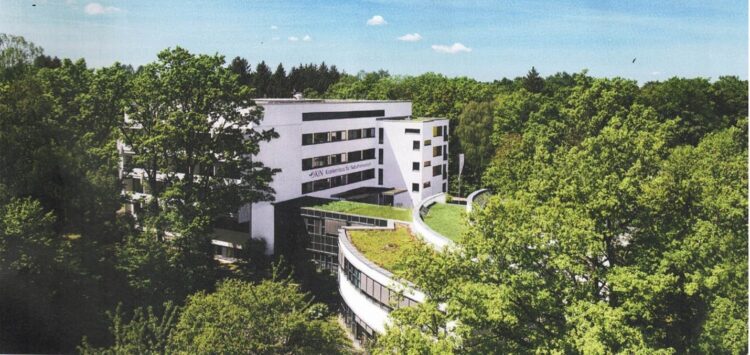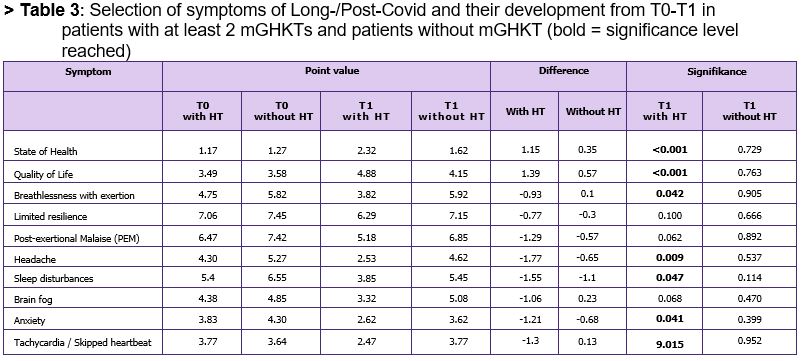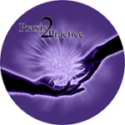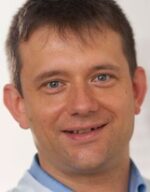Interim Results of the Ongoing
Long-/Post-Covid Study
From the Hospital for Naturopathic Medicine in Munich.
Abstract
In December 2021, we started an in-house observational study at the Krankenhaus für Naturheilweisen (Clinic for Internal Medicine, Naturopathy and Homeopathy) on the topic of “Effectiveness of our Naturopathic Complex Treatment for Long-/Post-Covid Syndrome”. While the first, initially small numbers of patients with Long-/Post-Covid came to us in the second half of 2020, these patients developed into one of our largest patient groups during 2021, in some cases with long-lasting and/or severe health impairments. This trend has continued almost unchanged so far in 2022. Finally, in July 2021, the S1 Guideline Long-/Post-Covid was published with a review planned for July 2022(3). Nevertheless, the variation does not contain any real therapeutic treatment approaches; the update had not yet been published when this article went to press. However, no significant new findings are expected.
Keywords: Long-Covid study, Post-Covid study, S1 Guideline, naturopathic complex treatment, KfN Munich

Translator Note: Krankenhaus für Naturheilweisen (KfN) has been translated in at least three ways in the literature as The Hospital for Naturopathic Medicine, for Natural Medicine and for Natural Healing. Located in Munich, it is one of the leading complementary medicine clinics in Germany. For more than 100 years, they have been integrating recognized procedures from complementary medicine such as naturopathy and classic homeopathy, into scientifically based conventional medical treatment concepts. For the purposes of this article I will remain with the more colloquially and commonly used translation of “Naturopathic”, although “natural medicine” would likely be more applicable in light of the many different complementary therapies they utilize. You can visit their website here: https://www.krankenhaus-naturheilweisen.de/ (and Mr. Google will happily translate for you).
With Long-Covid it is about a symptomatology that lasts longer than 4 weeks after going through a Corona infection. With Post-Covid you only speak of a persistence of complaints 12 weeks after going through a Corona infection. One can certainly argue about the meaningfulness of maintaining these two terms. Of course, there are some patients with prolonged convalescence in whom a Long-Covid state may not change over into a Post-Covid state – but finally almost all patients with Post-Covid syndrome immediately have 2 diagnoses, because they then also have Long-Covid Syndrome, unless the symptoms appeared in the earliest 4 weeks after the illness. In contrast however, it is important to know that not only the persistence of symptoms of an acute Corona infection or the consequences of any treatment can lead to a Long-/Post-Covid Syndrome, but also to a worsening of a pre-existing underlying disease or new symptoms that only appear after the end of the acute phase and are understood as a result of the Covid-19 illness. There are still only theories about the development of a Long-/Post-Covid Syndrome – approx. 10% of those infected with corona virus, and more women than men, are affected. However a real promising therapeutic approach is not yet in sight.
Treatment Methods at KfN
The KfN is one of the largest facilities for integrative patient care in the German-speaking world with 110 beds. From the conventional point of view, the KfN is a specialist clinic for internal medicine, and in addition primarily classical naturopathy and other complementary medical treatment approaches such as detoxification/drainage procedures, neural therapy and homeopathy are offered. Additionally, orthomolecular medicine and microbiological therapy are used as well as individual procedures from other medical concepts, e.g. acupuncture from Traditional Chinese Medicine. Our physical department offers a particularly wide range of services: These include, for example, reflex procedures such as foot reflex or connective tissue massage (FRZM/BGM), manual therapy, reflective respiratory therapy and dynamic spinal balance as well as osteopathic techniques, to name just a few.
A special treatment possibility at KfN consists of the implementation of moderate whole-body hyperthermia (mGKHT) with water filtered infrared A (wIRA). We have a total of 4 Heckel beds(1) and 3 overheating baths according to Schlenz(5). So, we can look back on more than 40,000 outpatient and inpatient mGKHTs since the beginning of this millennium. In mGKHT, by definition, core body temperatures of 40.5°C are not exceeded, otherwise we would come into the range of extreme hyperthermia with core body temperatures up to 42.5°C for which the patient would have to be analgosedated. This still experimental treatment is reserved for certain tumor diseases in a university setting.
However, the mGKHT is the most intensive stimulus to the patient’s body that we have available at KfN. It initiates numerous regulatory processes, which primarily affect the autonomic nervous system and the immune system. In addition, there is a transient increase in metabolism and in bradytrophic tissues, as well as a relaxation of the striated and even smooth muscles(7). It has been proven that mGKHT also has an antidepressant effect(2). During a stay, 2-3 mGKHTs per patient are planned if there are no contraindications or pronounced heat intolerance. The initial therapy program is created in the form of an individual treatment plan depending on the respective complaint picture when the patient is admitted. In the case of Long-/Post-Covid Syndrome this regularly includes the administration of ginseng, high-dose Vitamin C infusions and immunomodulating microbiological therapy; in dyspnea, lemon chest compresses and reflex respiratory therapy, or – in the case of severe fatigue symptoms – reflex procedures like foot reflex zone massage (FRZM) or connective tissue massage (BGM). However, there are significantly more different therapy components available.
The procedures of the so-called naturopathic complex treatment are then created(4) through a certain minimum number of defined treatment components with at least 120 documented daily treatment minutes. Through this procedure an additional fee can be generated which, together with the pure DRG* proceeds, makes the refinancing of this costly treatment program possible in the first place. For years we have had very good experiences particularly with mGKHT in other diseases that are accompanied by exhaustion symptoms (sometimes also very pronounced). These include especially fatigue, fibromyalgia and cancer-related fatigue syndrome. Therefore, we also assume a good effectiveness of our naturopathic complex treatment and especially the mGKHT in Long-/Post-Covid Syndrome. We see mGKHT as a central element of our treatment concept for this disease.
Of course it is all important during the inpatient treatment, not to surpass the individual load limit in the sense of the pacing, which means that each patient can cancel an application at any time and/or carry it out individually dosed. Thus the appearance of post-exertional malaise (PEM) is prevented, which patients do not always succeed in even in everyday life. Here, an activity diary can be an important help. Although an mGKHT is quite a strenuous procedure for the patient, we have made the experience so that PEM is rather the absolute exception, even in patients with such pronounced fatigue symptoms that otherwise no activity practices are possible.
KfN Effectiveness Study
The aim of the ongoing study at KfN Munich is to evaluate the effectiveness of our naturopathic complex treatment with Long-/Post-Covid Syndrome.
Therefore at the beginning of their stay at the KfN we have the participating patients complete a specially created questionnaire online on their current state of health (T0) which is then repeated after 1 month (T1), 3 months (T2) and 6 months (T3) after discharge. In it they are questioned about the most common symptoms (as mentioned in the S1 Guideline for Long-/Post-Covid Syndrome) of Long-/Post-Covid in their illness development (in each case in the form of a Numerical Rating Scale (NRS) from 0-10). In addition the validated German version of the Fatigue Severity Scale (FSS)(6) and the flowchart for the self-report of the functional status of Long-Covid (which comes from the S1 Guideline) are included. Questions about the assessment of the quality of life and the general state of health, which therapies were experienced as helpful and those which may have to be continued, whether there is a capacity to work or whether new symptoms have appeared round out the questionnaire sheets. It takes about 10-15 minutes to complete the questionnaire, and along with data protection Lime Survey makes it easy to do from home.
The most common symptoms of Long-/Post-Covid are: limited resilience; discomfort after exertion (post-exertional malaise); breathlessness after exertion; cough; muscle and/or limb aches; smell-, taste- and/or sleep- disturbances; depressive mood; anxiety; thinking and concentration disorders; brain fog; hair loss; stress; paralysis and sensory disturbances; dizziness; diarrhoea; nausea and tachycardia/skipped heartbeat.
Questionnaire Evaluation
In the following a small excerpt of the evaluation of the questionnaires is given which were available at the time of going to press for the time of 4 weeks after discharge and 3 months after discharge from the KfN (T0, T1, and T2). There are still too few questionnaires at Time T3 (6 months after discharge) to carry out a meaningful evaluation. Going into all the results would, of course, go beyond the scope here. Therefore, only a small selection of the previous results can be reproduced.
A total of 91 patients have been included in the study so far (75 female, 16 male). Our long-term goal is to enroll 250-300 patients by the end of 2023. Inclusion criteria are inpatient admission to our hospital and the presence of a Long- or Post-Covid Syndrome with a proven corona infection (by PCR). Participation is voluntary and irrelevant to the individual treatment concept. Since all included patients were hospitalized because of their Long- or Post-Covid illness, almost without exception they were severely affected, the majority of whom were significantly restricted in their everyday lives. Of course, all the greater is the challenge to achieve a significant and sustainable improvement in the “only” 10 treatment days available to us for Long-/Post-Covid Syndrome.
The gender distribution is consistent with previous general observations that of the approximately 10% of corona patients who suffer from Long-/Post-Covid Syndrome, more women are affected than men. The average age of the included patients was 47.73 ± 12.0 years (18-76), for women the average age was 47.28 ± 11.2 years (18-70), for men 49.81 ± 15.2 years (20-76). The acute Covid-19 infection was already more than 6 months ago in 36 cases, in another 36 cases between 3-6 months and in 19 patients only 1-3 months. The acute corona disease was mild in 18 cases (few symptoms to symptom free), in 69 cases moderate (clear symptoms, but without hospitalization) and in 4 patients with the need for acute hospitalization. 62 patients reported feeling completely healthy before Covid-19, 29 reported previously impaired capacity. 53 patients classified themselves as unable to work due to illness at the time of admission to KfN, 25 others as partially able to work and only 13 as fully fit for work. The median self-assessment of the quality of life of the 91 patients included in the study was only 3 on a scale of 0-10, where “0” corresponds to a minimum quality of life and “10” to a maximum quality of life. This shows the high and long-lasting illness burden of Long-/Post-Covid with a considerable influence on the ability to work, at least in the patient population who decided for inpatient treatment at the KfN.
Of the total 91 study patients, at publication 47 response forms were available at the Time T1 (4 weeks after discharge) and 26 response forms at the Time T2 (3 months after discharge). The number of response forms at Time T3 (6 months after discharge) is still negligible, because the study first started in December 2021.

In > Table 1 (above) the development of the subjective quality of life over the Times T0, T1 and T2 is shown, each determined from the currently available 91 (T0), 47 (T1) and 26 (T2) questionnaires shown in the table as “valid”. Accordingly, there are no “missing” questionnaires for (T0), 44 for (T1) and 65 for (T2). You can clearly recognize a relevant increase in the quality of life through the naturopathic complex treatment in KfN (both in average as well as median), in fact measured under everyday conditions 1 and 3 months after discharge from the KfN so that you can absolutely speak about a sustainable positive treatment effect.

In > Table 2 the self-assessment of the current state of health is asked about; this scale ranges from 0 = very bad, 1 = bad, 2 = satisfactory, 3 = less good, 4 = good, and up to 5 = very good. Here you can also establish a sustainable improvement from median 1 (= bad) to sustainable 2 (= satisfactory), even 3 months after discharge and under everyday conditions.
These may not be “big leaps”, but in the self-assessment of the quality of life and the state of health, clear and sustainable improvement trends with a one-time 10-day naturopathic complex treatment are provable. A repetition of the inpatient naturopathic complex treatment, e.g. after 3 months, could certainly bring the patients forward decisively, but is currently not (yet) arrangeable in relation to the health insurance companies; perhaps however this observational study can contribute to this. Alternatively you can also think about an extension of the duration of the treatment from the current 10 days to for example 14 days.
Preliminary Results of Symptoms
Very similar results as with state of health and quality of life can also be seen for the intensity of the most common and relevant symptoms of Long-/Post-Covid, like for example: Fatigue, limited resilience, post-exertional malaise, breathlessness after exertion, thinking and concentration disorders, sleep disturbances or headaches, each determined on a scale of 0 (= non-existent) to 10 (= maximum). On the other hand other symptoms stand out with only a slight or occasional, or even no appreciable improvement trend; these include e.g. tachycardia and skipped heartbeat, brain fog, muscle and limb pains, cough, depressive mood and anxiety. However many possible symptoms occur relatively rarely and cannot yet be adequately evaluated with the current number of cases, e.g. nausea, diarrhoea, hair loss, dizziness, paralysis or sensory disturbances, smell- and taste- disturbances. In our opinion it is not effective querying the symptom “stress”, but according to the S1 Guideline it is one of the Long-/Post-Covid associated symptoms. Therefore we have included it but no significant changes are shown with out treatment.
Preliminary Results with mGHKT
Because we see mGHKT as a central element of our treatment, it is of course very exciting for us to find out whether differences in treatment success can be proven in patients with at least 2 mGHKTs and patients without mGHKT.
Of the 91 patients included, 53 received at least 2 mGHKTs and 33 did not receive mGHKT due to contraindiciations (e.g. cardiac arrhythmias) or pronounced heat intolerance. Of the 53 patients with mGHKT, 34 have completed their questionnaire at Time T1, of the 33 patients without mGHKT 13 so far. This constellation allows a first evaluation of the importance of mGHKT for the treatment success of Long-/Post-Covid at Time T1.

In > Table 3 (previous page) presents a selection of symptoms that impressively show that treatment success with serial mGHKT is clearly improved and often also meets the significance level of <0.05 (according to Wilcoxon). All selected symptoms are rated on a scale of 0-10; only the state of health has only a scale of 0-5 from very bad to very good. With the query of the intensity of the symptoms, an improvement is of course expressed by a lower point value (or a negative difference in the course of the illness). Only in the state of health and quality of life do higher values (or a positive difference in the course) correspond to an improvement.
It can be well recognized from these selected case studies that the state of health and quality of life at Time T1 (thus 4 weeks after discharge) improved more impressively in patients with at least 2 mGKHTs during their stay in KfN than in patients without mGKHT – and that also highly significantly. These differences are also unequivocally indicated in the other selected symptoms which are among the most common and most affected symptoms of Long-/Post-Covid Syndrome; often the significance level is also reached (highlighted in bold in the table).
With patients without mGHKT there are also symptoms that even show a worsening.
Conclusion
So far in the results of the study the naturopathic complex treatment as it is carried out in the KfN in Munich shows clear indications for an improvement in the state of health of the patients, namely in the long-term even 4 weeks and 3 months after discharge. The Time T3 cannot yet be estimated. Additionally it can be impressively shown that moderate whole-body hyperthermia seems to be a quite elementary important treatment component.
Of course the planned inclusion of 250-300 patients by the end of 2023 is by no means reached yet, so these results are considered preliminary. But they are at least encouraging that a naturopathic complex treatment, which would not be too expensive to be repeated at regular intervals, is at least a possible treatment option for patients with Long-/Post-Covid. Moderate whole-body hyperthermia seems to be a particularly important and powerful treatment component. We will report on the further results of the study.
Conflict of Interest.
The author states that there is no conflict of interest.

An Exclusive Translated Article for P2P Supporters
From the Monthly Publications of P2P
Published January 2023
Report from Robert Schmidt, MD
From an article in Erfahrungsheilkunde, Volume 71, Issue #5, 2022
Machine Translation by Lernout & Hauspie, LogoMedia & Promt
Translation & redaction by: Carolyn L. Winsor, P2P Consulting
© Copyright 2022, EHK 2022; 71:249-249 I V 2022. Thieme. All rights reserved.
Translator Footnote:
* DRG-Erlös: (Diagnosis Related Groups) Reimbursement Institute – hospitals receive revenue from payers after they have performed their services.
Literature
- Heckel Medizintechnik GmbH. Ganzkörperhyperthermie. Im Internet: https://www.heckel-hyperthermia.com/index.php/de/de05; Stand: 15.07.2022
- Hanusch K-U, Janssen CW. The impact of whole-body hyperthermia interventions on mood and depression – are we ready for recommendations for clinical application? Int J Hyperthermia 2019; 36(1): 573-581
- Köllner V. S1-Leitlinie „Post-COVID/Long-COVID”. Ärztl Psychother 2021; 16(4): 264-266
- OPS-2022. 8-975 Naturheilkundliche und anthroposophisch-medizinische Komplexbehandlurig – ICD-Code. Im Internet: https://www.icd-code.de/ops/code/8-975.html; Stand: 28.07.2022
- Schlenz. Im Internet: https://naturheilkundelexikon.de/Schlenz-953282.html; Stand: 28.07.2022
- Valko PO, Bassetti CL, Bloch KE et al. Validation of the fatigue severity scale in a Swiss cohort. Sleep 2008; 31(11): 1601-1607
- Leitlinie zur Ganzkörperhyperthermie. Im Internet: https://www.heckel-hyperthermia.com/images/downloads/Leitlinie_GKHT_OKT2018.pdf; Stand: 30.08.2022[English version: https://www.heckel-hyperthermia.com/images/downloads/Guideline_DGHT_WBH_2018.pdf]



